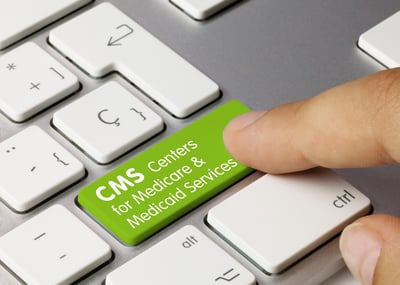Medicare Advantage Star Ratings Expected to Decline
Article originally posted here.
CMS is expected to release the star ratings “on or about October 6.”
 Medicare Advantage star ratings are expected to decline in this year’s annual ranking of the private Part C and D plans.
Medicare Advantage star ratings are expected to decline in this year’s annual ranking of the private Part C and D plans.
Star ratings are expected out today. The Centers for Medicare and Medicaid Services has said it would release the star ratings “on or about October 6.” One reason for the expected decrease is the end of guardrails, or disaster provisions, CMS had put in place to protect plans during the pandemic.
“If you’re a 4 star (plan), if you drop below, (CMS) safeguarded you and wouldn’t let the score drop,” said Jason Rose, CEO of AdhereHealth which works with plans on medication adherence. “Plans got a pass for the past couple of years. All those gloves are off now, all those safeguards.”
Insurers, he said, “are very, very concerned. We’re seeing a very material change in posture.”
This became especially true about three weeks ago, when CMS released the Second Plan Preview of cut points to the plans. Cut points are the ranges in which a plan’s score needs to fall to be assigned a star-level value.
Prior to the release, everyone was worried about the CAHPS measures (Consumer Assessment of Healthcare Providers and Systems), Rose said. But CAHPS measures remained comparatively flat. About half of the measures got easier, and about half stayed flat, with the exception of four, he said.
These four measures got much harder, Rose said. All are related to Part D drug adherence: Medication Adherence for Diabetes Medications, Medication Adherence for Hypertension RAS Antagonists (renin-angiotensin-system-acting agents), Medication Adherence for Cholesterol (statins) and Statin Use in Persons with Diabetes.
Rose claims that over half, 52%, of star-rating measures are related to medication, while Aspen RxHealth puts that number at greater than 40%.
Measures and their weight in star ratings can change yearly.

Nonadherence is estimated to cost the healthcare systems half a trillion dollars in hospitalizations, surgeries and mortality, Rose said. Medication adherence is also tied to patient experience and the social determinants of health.
When pharmacists positively engage with a patient in Medicare, the patient will likely walk away from that encounter with a favorable impression that would be reflected in the CAHPS Survey, according to Jenn Cohen, senior vice president, marketing and communications at Aspen RxHealth.
Patient experience accounts for about 32% of measures, when, in 2021, the CAHPS became quadruple-weighted. This is a concern for the National Committee for Quality Assurance, according to Andy Reynolds, assistant vice president of external relations.
Unlike other categories of process measures that check for such outcomes as controlling high blood pressure, the patient survey is subjective, measuring an experience or a complaint sometimes months after a patient has left the hospital, Reynolds said.
The CAHPS Hospital Survey, also known as HCAHPS (Hospital Consumer Assessment of Healthcare Providers and Systems), measures the beneficiary’s hospital experience through a mailed paper survey received by 800 beneficiaries sometimes weeks or months after the event.
“If you ask weeks or months after the fact, I’m not sure they remember it that well,” Reynolds said. Also, the response level is low, he said.
The heavy weight to patient experience can also affect healthcare quality, he said, as payers similarly shift their attention to this category, perhaps at the expense of other measures.
In a letter to CMS in March, AHIP expressed its Medicare Advantage payment and star rating concerns, including the survey measures.
“Everyone knows the patient voice matters,” Reynolds said. “The question is, how do you take in the patient voice?”
WHY THIS MATTERS
Overall, plans are worried about their place in the star ratings, not just this year, but next, according to Rose.
“It’s going to be a massive drop in actual performance of these plans,” Rose said. “They’re really focused on next year, which is the right thing to do.”
THE LARGER TREND
CMS uses a rating system of 1 to 5 stars to measure the performance of Medicare Advantage plans. Most health plans fall within the 3- to 4-star range. The ratings are important for insurers because they reflect the quality of care and whether consumers choose their MA plan for coverage.
The ratings also affect health plans’ 5% quality bonus payment. The money is used by insurers to increase extra benefit offerings, which attract more enrollees. The quality bonus payment has gone up to about $12 billion, according to Rose, which is about $450 per member, per year. The bonus must go back into plan benefits.
This bonus is most effective at the 4-star level, Rose said. At 4-and-a-half stars, there is no change. Within the elite of 5 stars there is no new revenue, but the plans can enroll members year-round, instead of just during open enrollment.
Below 3 stars, plans don’t get anything, Rose said. CMS can revoke the license of a plan rated below 3 stars for three years in a row and notify its members that they are in a low-performing plan.
At 3-and-a-half stars, plans get some benefit having to do with drug rebates.
“All the money is in 4 stars,” Rose said. “You’re in the money for $450 per year.”